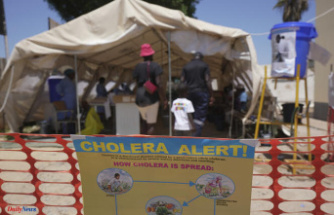A life without a crisis seems unthinkable at the moment. What was previously known has lost its self-evidence. This also applies to the power supply, on which the water and food supply depend, for example. How should you arm yourself against bottlenecks?
One point must be added to the list of possibilities that could also lead to a catastrophe in the supply situation: sabotage. In this way, rail traffic in the north of the country was paralyzed at the weekend. So far, it has been important to be prepared for severe storms, floods, extreme heat or heavy snowfall and ice, corona isolation or - also relatively new - a power blackout.
Interestingly, as early as December 2021, 32 percent of those surveyed were concerned that the power supply could also fail at their place of residence. In addition to natural disasters (52 percent), ailing power grids were seen as the second greatest blackout risk at the time, together with cyber attacks (38 percent each). The majority of all those surveyed considered it sensible to prepare for a possible blackout (61 percent), also because most of them do not trust public authorities with this task.
Either way, unfortunately a lot seems possible at the moment - life without a crisis is almost unimaginable. The Federal Office for Civil Protection and Disaster Assistance generally advises preparing for crises and disasters. This also includes creating an emergency supply for about ten days. No matter what crisis makes the food or drinking water supply difficult or impossible. A food and drink supply helps to bridge the time until government aid starts.
However, it should not go unmentioned that emergency stockpiling of food has been criticized to the effect that potatoes, pasta and rice cannot be prepared edible if the power goes out. Because nationwide, many households use electric cooktops or induction hobs. An objection that is certainly not to be neglected.
In this respect, the emergency stockpiling should perhaps be expanded to include a gas cooker, such as that used when camping, or at least a spirit cooker. If you have your own garden, you can also use your own fireplace.
Apart from that, here is the list from the Federal Office for Civil Protection and Disaster Assistance with things that you should always have on hand at home:
Example of a basic ten-day supply of food and drink for one person:
This supply corresponds to about 2200 kilocalories per day and thus usually covers the total energy requirement.
In addition, the following things should always be in the house for possible emergencies:
Medical supplies:
drugstore items:
Miscellaneous:
A power bank can also be added to the list. Because if the battery of a smartphone is empty, communication and information falls flat. With a capacity of 10,000 mAh, the battery packs are available for around 10 euros. This means that almost every smartphone can be fully charged at least twice. So please have it up your sleeve. If you want to be more precise, you can find more competent advice here.
Finally, a gentle admonition: Despite all the adversities you want to be prepared for, there is no reason to panic or panic buy. Please think not only of your own needs, but also of those of your fellow human beings. There should be something left for them too. Every pack of pasta and toilet paper that is casually grabbed from stocks increases the feeling that others also have to replenish stocks, which then leads to a so-called buying panic, in which some simply have nothing left. So please let it be. Thanks!












